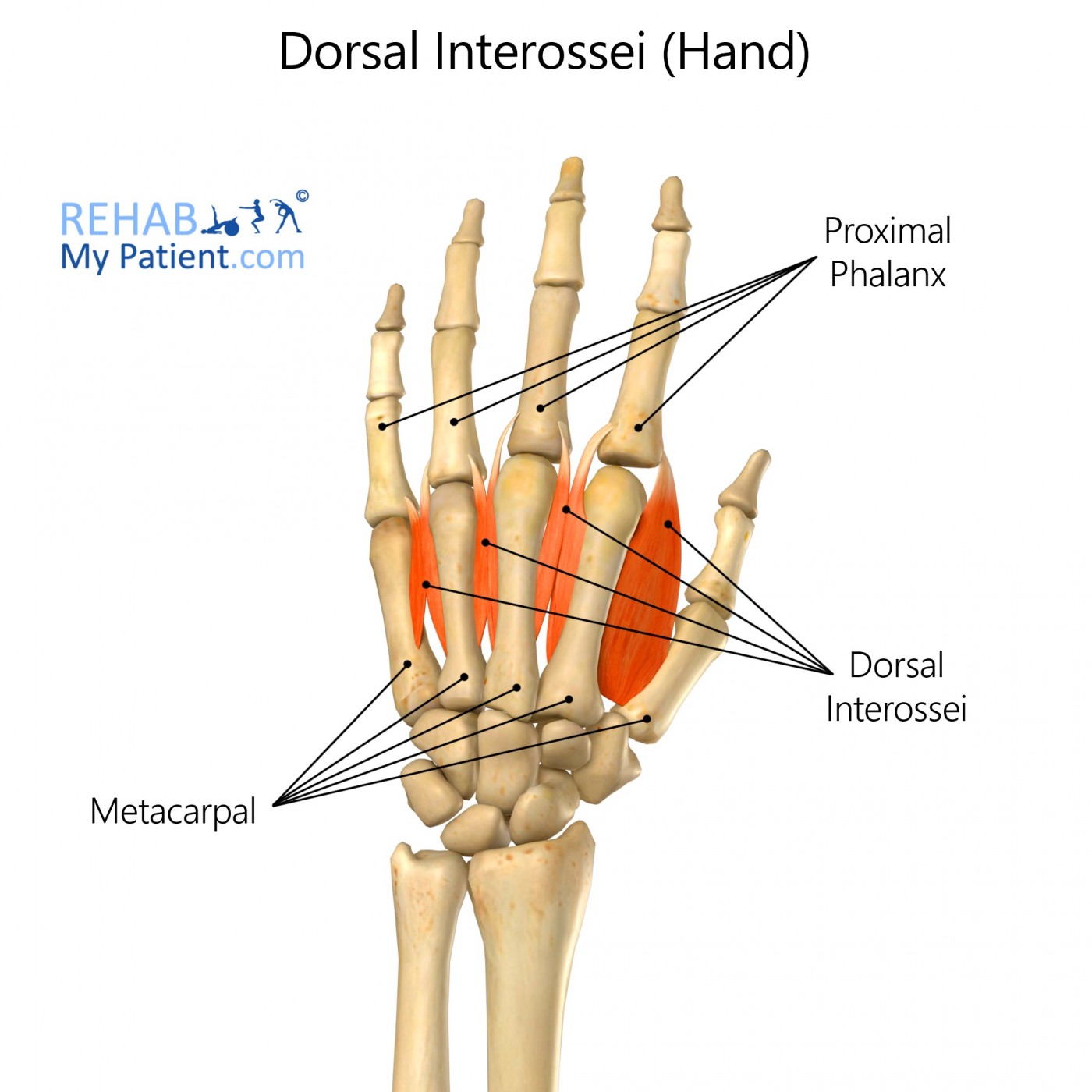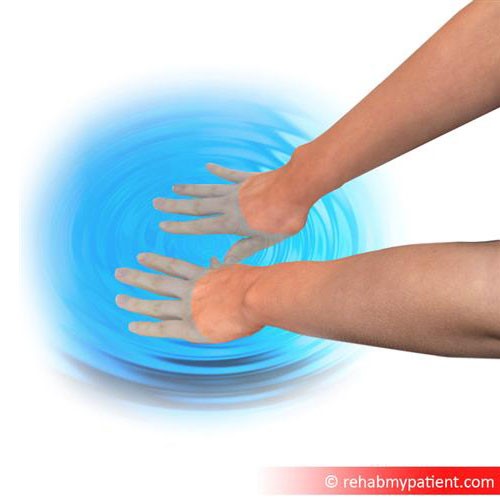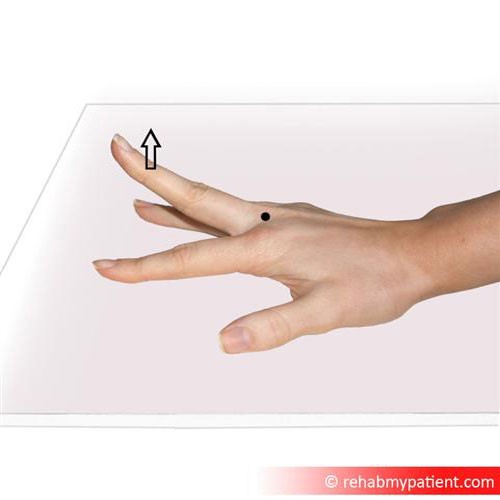Dorsal Interossei of the hand
Opublikowano dnia 22nd Jul 2020 / Opublikowano w: Ręka/Palce/Kciuk

General information
Dorsal interossei of the hand are four muscles on the back of each hand. There are four dorsal interossei muscles in each hand. These match the palmar interossei muscles that sit on the front side of the hand (palm).
Literal meaning
The term dorsal interossei translates from Latin as ‘muscle between the bones on the back’ (of the hand). Dorsal meaning back, inter meaning between, and os is bone.
Interesting information
These muscles play a role in any sport that involves gripping with the hand, such as holding a bat or racquet. The dorsal interossei may be injured and inflammation can occur due to overuse, seen especially from long hours of typing or writing. When there is inflammation or tenderness, a simple handshake can be painful. By gently squeezing the hands, or by restricted adduction and abduction of the fingers, injury can be tested. Treatment involves friction or massage therapy.
Origin
They are bipennate muscles which means they arise from two points. Each muscle arises from the adjacent sides of the metacarpal bones of the respective finger to which it is inserted.
Insertion
Each muscle is inserted into the proximal phalanges and into the extensor expansion of digits two, three and four.
Function
The dorsal interossei of the hand abduct the forefinger, middle finger and ring finger away from the hand’s midline. They also help in flexion of knuckle joints and extension of finger joints. The first dorsal interossus helps in thumb adduction.
Nerve supply
All four muscles are innervated by the deep branch of the ulnar nerve (C8 and T1).
Blood supply
They have blood supply from several arteries including the dorsal and palmar metacarpal artery and branches of the deep palmar arch.

Relevant research
The study, ‘Acute Compartment Symptom of Forearm and Hand’ discusses the clinical features that aid in the diagnosis of the syndrome and the surgical techniques for treating this condition effectively. The study concludes that fasciotomy is to be done proactively when there are suggestive clinical findings.
T. Chandraprakasam and R. Ashok Kumar. Acute Compartment Symptom of Forearm and Hand. Indian J Plast Surg. 2011 May-Aug; 44(2): 212–218.
Dorsal Interossei of the hand exercises
If your hand and fingers feel stiff or painful, you can warm them up prior to exercising by soaking them in warm water for a few minutes. You can also use a heat pad.

These exercises help to increase the range of motion of your fingers and increase flexibility.
Finger stretch
Place your hand on a flat surface, with palms facing down. Slowly straighten the fingers as much as you can without straining your joints. Hold for a minute and then release.
Repeat five times for each hand.
Finger Lift
Place your hand on a flat surface, with palms facing down and fingers straight. Lift each finger up slowly and lower it. You can also lift all fingers simultaneously and lower them. Repeat ten times for each hand.

Zapisać się
Zarejestruj się już teraz, aby skorzystać z bezpłatnego okresu próbnego!
Zacznij korzystać z Rehab My Patient już dziś i zrewolucjonizuj proces przepisywania ćwiczeń, aby zapewnić sobie skuteczną rehabilitację.
Rozpocznij 14-dniowy bezpłatny okres próbny